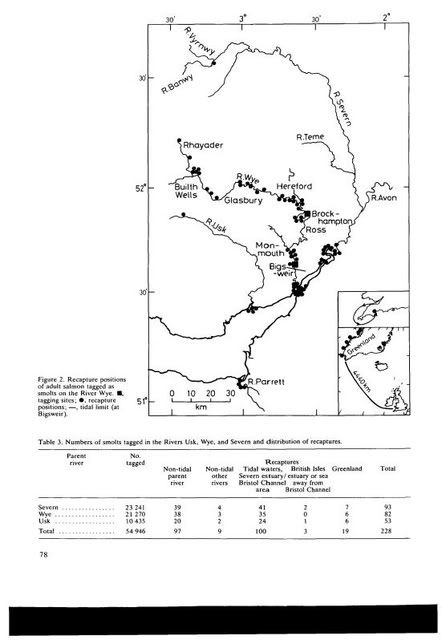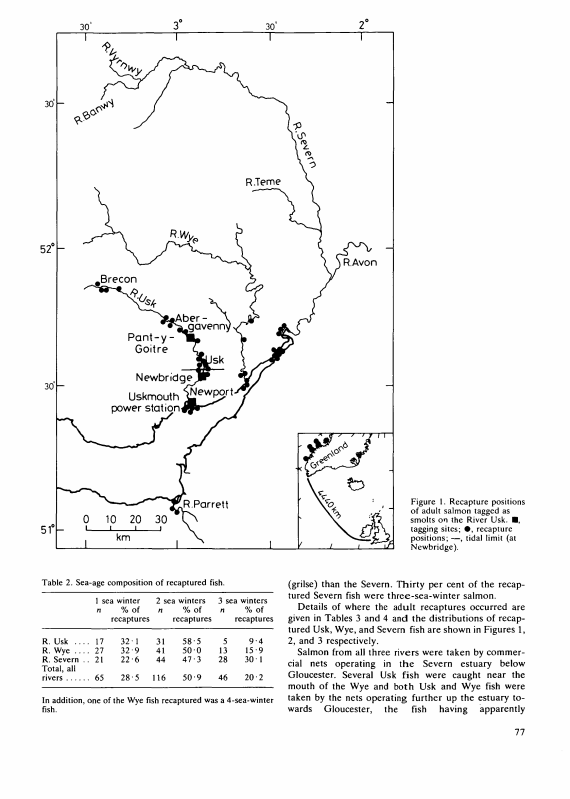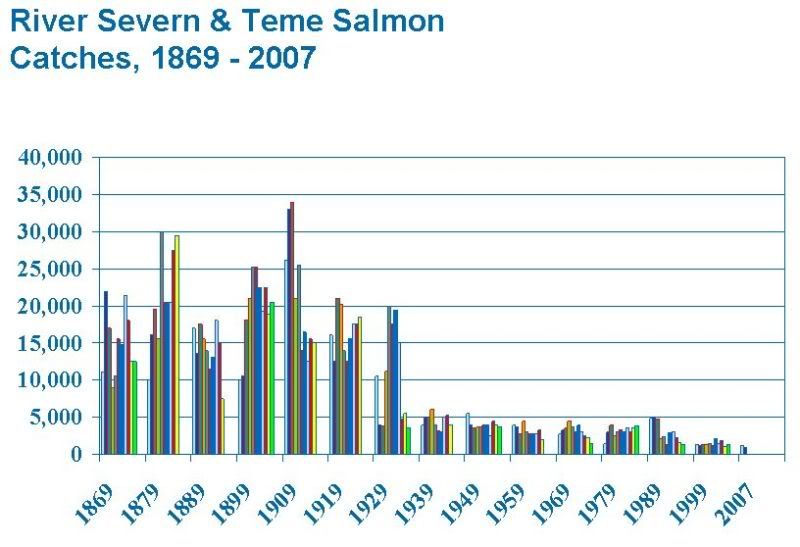 Anglers being anglers exaggeration, gossip and plain untruth spreads quickly in our ranks. The result is that most angling communities have a set of urban myths that are repeated so often that people believe them to be true. Severn salmon anglers are no different. Many of these myths come from the 'doom and gloomers', what I would call the grumpy faction, people who only seem to be happy when they've got something to moan about.
Anglers being anglers exaggeration, gossip and plain untruth spreads quickly in our ranks. The result is that most angling communities have a set of urban myths that are repeated so often that people believe them to be true. Severn salmon anglers are no different. Many of these myths come from the 'doom and gloomers', what I would call the grumpy faction, people who only seem to be happy when they've got something to moan about.This is the first of a series of articles designed to debunk some of these myths by looking at the facts and coming up with a more balanced view.
Myth number 1 'Historically the Severn produced far more fish than the Wye.'
This claim is something you hear repeated on the bank from time to time. It is used to illustrate the extent of the decline in salmon stocks on the river. The evidence that is usually cited to back up the claim is the fact that the total reported catch from the Severn district reached a peak of 33,000 in 1911.
What this myth ignores is the fact that an awful lot of Wye and Usk fish were counted as part of that ‘Severn’total. The Severn district net and fixed engine catch actually consisted of a mix of fish from the Usk, Wye and Severn caught in the Severn estuary, plus a much smaller number of fish caught from the river proper. Historically all net and fixed engine catches in the estuary down to the Wye mouth were counted as part of the Severn total, this reporting procedure continued to the present day.[i]
Back in the late 19th century, J. W. Willis Bund chair of the Severn Board of Conservators was well aware of this mixing of the stock from the three rivers. This is what he said about in his book ‘Salmon problems’ published in 1885:
‘In the lower Severn there are, no doubt, different kinds of Salmon met with. There is the ordinary Severn fish; a longer and lankier fish, that is said to be a Wye fish; and a short thick fish that the fishermen speak of as "Uskers”. I have not met with either of the last two kinds above Tewkesbury weir, and I cannot say if the names locally assigned to them are right. Salmon from the same river,present such varying forms, that it is almost impossible, even for the most experienced, to say positively that such and such fish belongs to a particular river. ‘
‘All that can with certainty be said, is that a portion of the catch of the Severn are bred in the Wye,that the fish taken as far as the Severn bridge [ii]probably belong to either river; but I have no evidence to show that if a fresh came down the Severn, the Severn fish would alone ascend, and leave the Wye fish in the estuary waiting for a Wye flood.’
Willis Bund believed that the only way to get a better picture of the extent of the mixing of stocks in the estuary was to mark estuary caught fish and then release them and monitor any recaptures.
‘This is one of the points that, if marking fish were carried out on a large scale, might be cleared up. This fact should also be borne in mind in reading the reports of the Inspectors of Fisheries when they institute comparisons between the Severn, Wye, and Usk, and state that the Wye take has increased, and the Severn fallen off, and wonder how it is to be accounted for, as it is by no means clear that the take of the district has fallen off, for the increase of the Wye in tidal water may represent Severn fish, or vice-versa. When the rivers has a common estuary, and the districts are divided by an imaginary line, it is impossible to say what fish rightly belong to each river. ‘
A smolt tagging study of the three rivers was finally carried out from 1958 to 1964. It concluded that: ‘the commercial nets operating in the upper reaches of the estuary below Gloucester and above the confluences of the Usk and Wye caught salmon from all three rivers indicating that some of the Usk and Wye fish returning from the sea had overshot their parent rivers.’[iii] The maps showing the capture points of smolts tagged from the Wye and Usk are shown below.
T he study suggested that 31% of the Severn net and fixed engine catch came from the Wye and 24% from the Usk. This probably overestimates the percentage of Severn fish in the catch at that time as a disproportionate amount of the smolts tagged came from the Severn.
If tagging had been carried out in proportion to the rod catch from each river then the Wye and Usk would have produced many more tagged smolts in the Severn catch.
The study showed that it wasn't that the Severn estuary nets and fixed engines caught the occasional Wye and Usk fish, salmon from those two rivers made up a majority of the catch.
Pretending the 'Severn' net catch is a measure of fish spawned in the Severn and returning to it makes no sense.
The fact that the Severn estuary catch peaked in 1911 after netting was severely restricted on the Wye from 1901 isn't a coincidence. The removal of the nets allowed more Wye fish to return and spawn, this in turn boosted the Wye rod and Severn net catch.
It is ironic that in the peak years of the Severn district catch most of the salmon may well have come from the Wye.
No doubt before the industrial revolution a more or less unpolluted Severn may well have provided spawning grounds for more salmon than the Wye, but not since then.
Myths and prejudices to be covered in future articles include: 'With the putchers off we should be catching a shed load more fish' and, 'Without weirs the Severn rod catch would fall'
'
[i] ‘Some of the Putcher ranks operated in the Severn estuary, have been owned by the Wye Fishery Authority and were leased from them on an annual basis. Catches made by these implements have been recorded with the rest of the Severn catch throughout the review period’ Fisheries data report number 38, Salmon and migratory trout statistics for England and Wales 1951 – 1990, MAFF Lowestoft 1995.
[ii] The Severn bridge referred to was the railway bridge from Sharpness to Lydney
· [iii] The migrations of salmon (Salmo salar L.) from three rivers entering the Severn estuary, by A Swain, http://icesjms.oxfordjournals.org/content/40/1.toc



No comments:
Post a Comment
Note: only a member of this blog may post a comment.